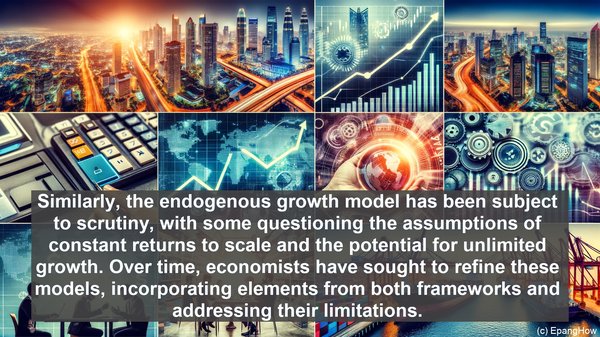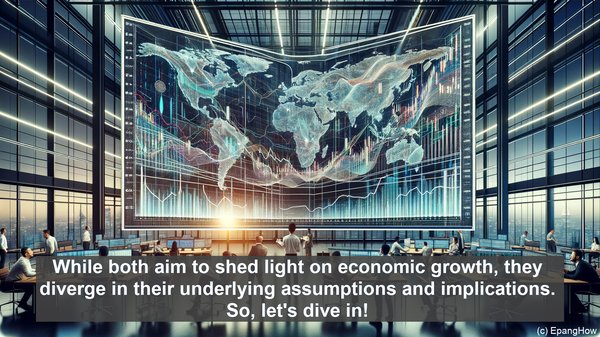Introduction: Unraveling Economic Growth Models
Greetings, ladies and gentlemen! In the realm of economics, understanding the factors that drive economic growth is of paramount importance. Over the years, economists have developed various models to explain this phenomenon. Today, we’ll be focusing on two prominent ones: the neoclassical growth model and the endogenous growth model. While both aim to shed light on economic growth, they diverge in their underlying assumptions and implications. So, let’s dive in!
The Neoclassical Growth Model: A Foundation in Traditional Economics
The neoclassical growth model, rooted in the principles of traditional economics, posits that economic growth is primarily driven by exogenous factors. These factors include technological progress, population growth, and capital accumulation. The model assumes that the economy operates at its steady state, where the capital stock per worker remains constant. In this framework, diminishing returns to capital play a crucial role. As the capital stock increases, the marginal product of capital declines, leading to a gradual decrease in the growth rate. This concept is often encapsulated in the famous ‘Solow-Swan’ growth model, named after its pioneers. While the neoclassical growth model provides valuable insights into the determinants of economic growth, it has its limitations.
The Endogenous Growth Model: Embracing the Role of Internal Factors
In contrast to the neoclassical model, the endogenous growth model emphasizes the significance of internal factors in driving economic growth. It argues that factors such as human capital, knowledge, and innovation can have a self-reinforcing effect on the growth rate. Unlike the neoclassical model, the endogenous growth framework does not assume diminishing returns to capital. Instead, it suggests that investments in areas like research and development can lead to increasing returns, fueling sustained growth. Notably, the endogenous growth model gained prominence in the 1980s, challenging the neoclassical orthodoxy.

Implications: Neoclassical vs. Endogenous
The differences between the two models have significant implications. In the neoclassical framework, policies that promote capital accumulation, such as savings incentives, can be effective in stimulating growth. On the other hand, the endogenous growth model highlights the importance of policies that foster innovation, education, and knowledge creation. It suggests that investments in these areas can have long-term positive effects on the growth rate. Moreover, the endogenous growth model also recognizes the role of institutions and the broader socio-economic environment in shaping growth dynamics.

Critiques and Evolutions
Like any economic model, both the neoclassical and endogenous growth frameworks have faced critiques. Critics of the neoclassical model argue that it oversimplifies the complexities of the real world, neglecting factors like technological spillovers and institutional dynamics. Similarly, the endogenous growth model has been subject to scrutiny, with some questioning the assumptions of constant returns to scale and the potential for unlimited growth. Over time, economists have sought to refine these models, incorporating elements from both frameworks and addressing their limitations.
